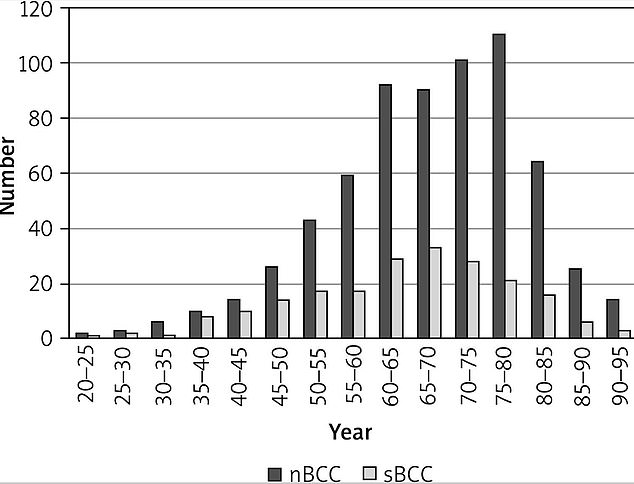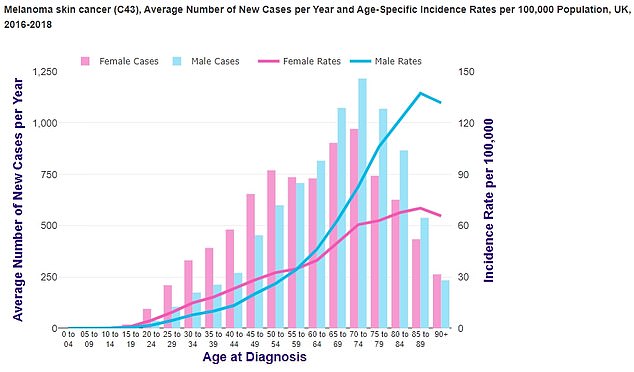The common skin cancer that could turn into deadly melanoma- as President Joe Biden shows off sunburned skin on return from Caribbean vacation less than a year after having cancerous lesion removed
Joe Biden may have been put at increased risk of fatal skin cancer after getting sunburned during his New Year's holiday, experts say.
The 81-year-old president was pictured with “lobster red” skin on Tuesday as he returned from a week's holiday at a $3 million private villa in St Croix, the US Virgin Islands.
While a one-time sunburn is unlikely to develop into the deadly skin cancer melanoma, Biden has a history of cancerous lesions on his body — with repeated sunburn increasing the risk of several types of skin cancer.
In February 2023, the president had a lesion of basal cell carcinoma – a form of skin cancer – removed and has had several other bouts of the cancer before 2021.
Dr. Anisha Patel, a dermatologist at UT MD Anderson Cancer Center in Houston, warned that damage to the president's skin from the sun's rays increases the risk of melanoma — a skin cancer that only 30 percent of patients survive if detected at a late stage.

President Joe Biden sported a bright red sunburn as he returned from his St. Croix vacation over the holidays. Dermatologists warn that this can increase the risk of skin cancer


The president's sunburn was notable following his treatment for skin cancer in February 2023, during which he had a basal cell carcinoma removed from his chest
Speaking to DailyMail.com, she said: 'Sunburn increases the risk of skin cancer in general – including melanoma – due to exposure to UV radiation.
'The fact that he had basal cell carcinoma indicates that there is enough UV damage to cause skin cancer.'
However, she added: '(The fact) that he has not had melanoma so far is significant – and a good sign.
'As you get older, you are at increased risk of all forms of cancer because our DNA repair mechanisms do not work as well.
'So if he's made it this far without melanoma, his genetic risk factors are low. I see patients in their 20s, 30s and 40s with this skin cancer.”
Dr. Deborah Sarnoff, president of the Skin Cancer Foundation, told DailyMail.com that just five sunburns double the risk of developing melanoma.
And a 2023 study Research has shown that people who have had basal cell carcinoma have a sixfold increased risk of developing melanoma than those who have not had the disease.
Basal cell carcinoma is the most common type of skin cancer and the most common type of cancer in the US, with 5.4 million people diagnosed each year.
It usually develops in areas that are frequently exposed to the sun, where damage accumulates over time.
It occurs when cells in the top layer of the skin begin to divide uncontrollably, forming a translucent pink spot that may be itchy or painful.


The above shows cases of basal cell carcinoma of skin cancer by age group, recorded in a study. The label nBCC refers to basal cell carcinomas of the neck and head, while the label sBCC refers to carcinomas of the trunk. Joe Biden had one on his trunk in his late 70s


The above shows the diagnosis rates for melanoma, a deadly form of skin cancer, by age. The data shows that they peak among men between the ages of 70 and 75, before declining


President Biden had the lesion removed from his chest during his physical – above Biden on the beach in May 2009
Dermatologists treat the cancer through surgery to remove the growth, which is almost always successful. The cancer has a survival rate of more than 99 percent.
However, melanoma is a much less common form of cancer, accounting for approximately one percent of cases each year, and involves cells that produce pigment in the skin.
Like basal cell carcinoma, the risk of melanoma is also increased by sunburn, which can damage the DNA in the cells.
Warning signs of the disease include changes to an existing mole, such as turning red or changing shape.
If melanoma is detected at an early stage, almost all patients survive.
But if it is not discovered until it has spread to the lymph nodes, this drops to 72 percent of patients surviving five years after diagnosis.
If it is not discovered until it has reached another organ, only 32 percent of patients survive.
Biden was treated several times before 2021 for non-melanoma skin cancer – which also includes basal cell carcinoma. That's what the White House doctor saidadding that all cancerous spots were removed with clean margins.
He was also treated in February 2023 for a basal cell carcinoma on his chest, which was surgically removed.
His doctor said the surgery site was “healed well” and that the president would undergo routine checks of his skin for cancer.
People who have had basal cell carcinoma should see their dermatologist for check-ups every six to twelve months.

